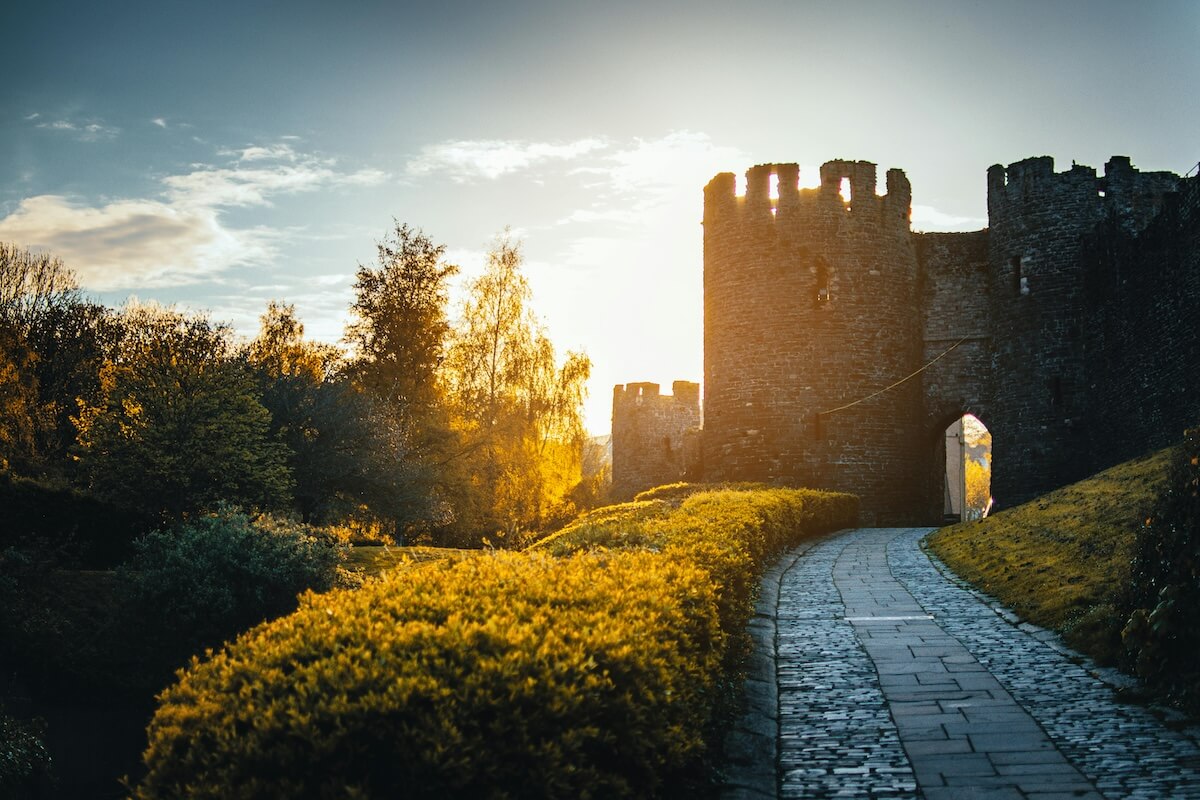The Legend of King Arthur and his Knights of the Round Table has been mined for numerous film adaptations.
There’s been classic fantasy like Excalibur, spoofs like Monty Python and the Holy Grail, or Arthurian code as an obscure reference point in the biker jousting film Knightriders.
And here we have the fantastical take.
David Lowery’s The Green Knight is a modern update of the tale of Sir Gawain and The Green Knight by the Anonymous Poet.
Not a swashbuckling, chivalric adventure fans will be eager to cosplay, this is a slow-burning, contemplative fantasy.
Initially set for a 2020 debut at South by Southwest, its release was interrupted by the COVID pandemic.
Luckily, the film managed a delayed release in 2021, making over $20 million against its $15 million budget and seemingly staving off disaster.
Yet while critics have been kind, audiences have been mixed. For example, you can see the film’s current 89% critical, 50% audience score on Rotten Tomatoes.
So as a film fan who plays critic, where would I fall on the rating scale? It was finally time to find out.
So is The Green Knight a good movie?
The Plot of The Green Knight:
At Christmas, Gawain (Dev Patel) is woken up by his lover, Essel (Alicia Vikander) in a brothel.
After being lashed out at by Mother, Morgan le Fay (Sarita Choudhury), Gawain goes to the feast hosted by his uncle – none other than King Arthur (Sean Harris).
Meanwhile, Mother performs a magic ritual that summons an otherworldly Green Knight (Ralph Ineson).
The Knight enters the king’s court, asking who among them will dare to join him in a game.
The Green Knight will allow one of Arthur’s knights to strike a blow on him. Then, in one year, they will meet him at a green chapel in the north, where he shall return the blow.
Gawain rises to the occasion. Taking his uncle’s sword, he slices the Green Knight’s head off.
But the Green Knight’s body places its head back on its shoulders and leaves, repeating the location and date to meet again.
As a year passes, will Gawain have the courage to complete the Green Knight’s challenge?
The Rest of the Main Cast Includes:
- Joel Edgerton as the Lord
- Barry Keoghan as the Scavenger
- Erin Kellyman as Winifred
- Kate Dickie as Queen Guinevere
- Atheena Frizzell as Youngest Sister
- Tara McDonagh as Middle Sister
- Nita Mishra as Older Sister
- Emmet O’Brien as Merlin
- Helena Browne as the Sightless Woman
- Megan Tiernan as Gawain’s Young Queen
- Ruth Patel as Gawain’s daughter (age 4)
- Rose Patel as Gawain’s daughter (age 6)
- Sam Uppal Lynch as Gawain’s son (age 7)
- Adam Karim as Gawain’s son (age 17)
The giants are motion-captured by Andrea Deaskovic, Melinda Dempsey, Aoibheann Garry, Isabel Friosi, Rachel Quinn, Hannah Sjoden, and Lucy Waters
The Good Things
Beautiful Visual Storytelling, +6 Points
Watch this movie, and your eyes will thank you.
The Green Knight is visually exceptional, even at would-be mundane moments.
Though it’s highly original, it’s as if Terrence Malick’s The New World meets Guillermo del
Toro’s Pan’s Labyrinth. We explore an expansive world with wonder yet are haunted by darker imagery.
Whether it’s a wide shot of Gawain traversing rugged terrain or preparing to meet his destiny, the lighting and color are like wading in magic.
Props like the children’s puppet show and costumes like in a wedding scene or the King and Queen’s saintly crownstransport us entirely elsewhere.
And the Green Knight is not a man in shining armor but an earthly monster, a knotty green pile of twisted roots.
Lastly, the old-fashioned letters on the screen, marking chapter headings, old English, are a nice link to the poem it’s based on.
And despite the beauty, the camerawork and production design always felt relevant rather than self-indulgent.
For example, there’s a long take as Gawain comes across a battlefield and meets Scavenger.
On his journey, Gawain, on horseback, emerges from a nearby forest. We see the swirling dust or mist that comes out with him. The title card flashes the chapter “A Kindness” across the screen.
Gawain rides into the foreground, and the camera pivots. It’s moving alongside him now, as he passes an open field that was the site of a recent battle, which we can see in an expansive view.
There in the field, Scavenger, played by Barry Keoghan, emerges and walks right alongside him. Again, the camera flows with them as they travel left to right. Mist and dust pass in front and behind our characters.
Their conversation continues. Now, at the 2:00 minute mark, we’re way out on the battlefield. Overturned wagons and makeshift graves behind, our characters in the foreground.
And as they stop to discuss directions to the chapel, the camera stops with them.
Finally, at about three minutes, when Scavenger gets angry and demands a reward for his help with directions, we cut into a close-up to show his frustration. Not to get into spoilers, but Scavenger is, of course, trouble. And this cut is our clue.
The scene shows a strong command of the camera – when to take in the entire environment and when to draw the audience’s focus into a specific detail.
Depth of Character, +4 Points
The Green Knight isn’t a straightforward, chivalric tale of a man resisting temptations and winning the day.
Instead, it’s a morally complex story about a struggling protagonist.
Here we have a young heir to the throne who spends his time in a brothel, not quite committed to his lover.
His mother practices the occult.
And worst of all, he’s a knight without a famous feat, no story to tell.
Where once the Arthurian Code was beaming white, here it’s like a flickering candle in the darkness that could be snuffed out at any minute.
Gawain is not larger than life. He’s human and complicated. And we enjoy the movie more thanks to his layers.
Open Ended, +2 Points
Poems are often open to interpretation, and this film based on a poem follows that amorphous line.
Much of the dialogue feels more symbolic than literal, especially The Lady’s (also Alicia Vikander) monologue about why the Knight is green.
We don’t know the truth about Gawain, but he doesn’t seem to either.
You can pull out clear themes here – the Green Knight, as if representing the Earth, is at odds with humanity over power.
Or you could ask if our honor and duty are worth the price we may have to pay to have it.
Ambiguity can be frustrating, but here, it provides value.
Dev Patel as Gawain, +4 Points
Patel’s brooding and vulnerable performance is flawless and vital. We feel Gawain’s inner turmoil, which is at the movie’s heart.
It was a challenging role to play. Most of the story is told visually rather than through dialogue.
And Gawain is in nearly every scene, often all alone in the frame.
He doesn’t have a thousand-yard stare, but his face carries the weight of what’s on his mind.
We feel his fear when he faces the Green Knight or his desire when tempted by the Lady.
And we have to sympathize with Gawain. Most of us struggle to turn down that last slice of pizza. Gawain has to reject the advances of a character played by Alicia Vikander.
Visual Storytelling, +4 Points
Talk about showing and not telling. I remember about a handful of lines of expositional dialogue.
We know a year has passed based on the wheel of the seasons in the puppet show. We can tell the king’s health is failing based on his frail appearance.
But the crowning glory comes near the film’s end, a dreamlike sequence that could win a montage contest. As Gawain contemplates the potential courses of his life, they play out over the years. It shows us every light and dark possibility running through his mind.
Visually told, you could watch this film in another language and enjoy it, still carrying its thematic weight.
The Not-As-Good Things:
No, Not the CGI! -1 Point
Oh, the dreaded CGI (computer-generated images): the scorn of many movie purists such as myself, though often a necessary evil.
The production design of this movie avoided CGI in many instances.
Still, when it arrives, it gets frustrating in a couple of ways.
Gawain’s fox companion is a shimmering pile of pixels that stuck out so much it pulled me out of the movie.
It’s sad when you consider how well a picture like Babe: Pig in the City was able to pull off talking animal effects years ago (though, admittedly, that film had a massive budget).
It’s a well-documented rule of filmmaking never to work with live animals. Still, I’m disappointed
a film of this visual quality couldn’t find a solution.
And the giants (which I’m not sure is a CGI effect) are a neat inclusion to the story’s fantasy but look a bit hollow and ghostly.
Luckily, these characters have little screen time. So they only drag the visual splendor down a splinter or two for me.
Not an Action Piece or Laugh in Sight, -1 Point
Some audiences may struggle to sit through ~2 hours of a heady journey.
While many things happen, this is a knight movie without a duel, a castle defense, or a wizard battle.
And there isn’t a joke at any point in the film.
I’ll defend the movie, as it needed to keep the subdued tone of the story. But the lack of relief may make it hard for some audiences to get to the finish line.
Go Watch The Green Knight
Total Score: 18 Points
The Green Knight is a visual delight, a film you could justify watching just to see it sparkle.
It amps up the myth while injecting the film with a thoughtful tone.
But its superpower is showing you constant eye magic while concealing its deeper meaning, which you’ll have to look for almost within yourself.
I cannot find my own conclusion as to what this movie means.
But rather than find that frustrating, it only makes me want to revisit it again (though for those who like closure, fear not: plenty of explanations seem to exist on YouTube).
So if you’re looking for action-packed Sword and Sorcery or to be regaled with lively tales of Arthurian chivalry, you’d be mistaken to look here.
But if you want a film to take you on an atmospheric journey with a hero in conflict with himself, this is your ride.
I’m happy to set The Green Knight in its rightful place as one of my new favorites and look forward to my next viewing.
Enjoyed this Post?
Thank you so much. If you’d like to get a ping when I have a new article, you can join my newsletter below.
Disclaimer:
This review’s factual information was gathered through online sources, like Wikipedia, IMDB, or interviews. Misrepresentations and errors are possible but unintentional.
Making art is hard. This is a fan’s blog. Any criticisms are meant to be constructive.



